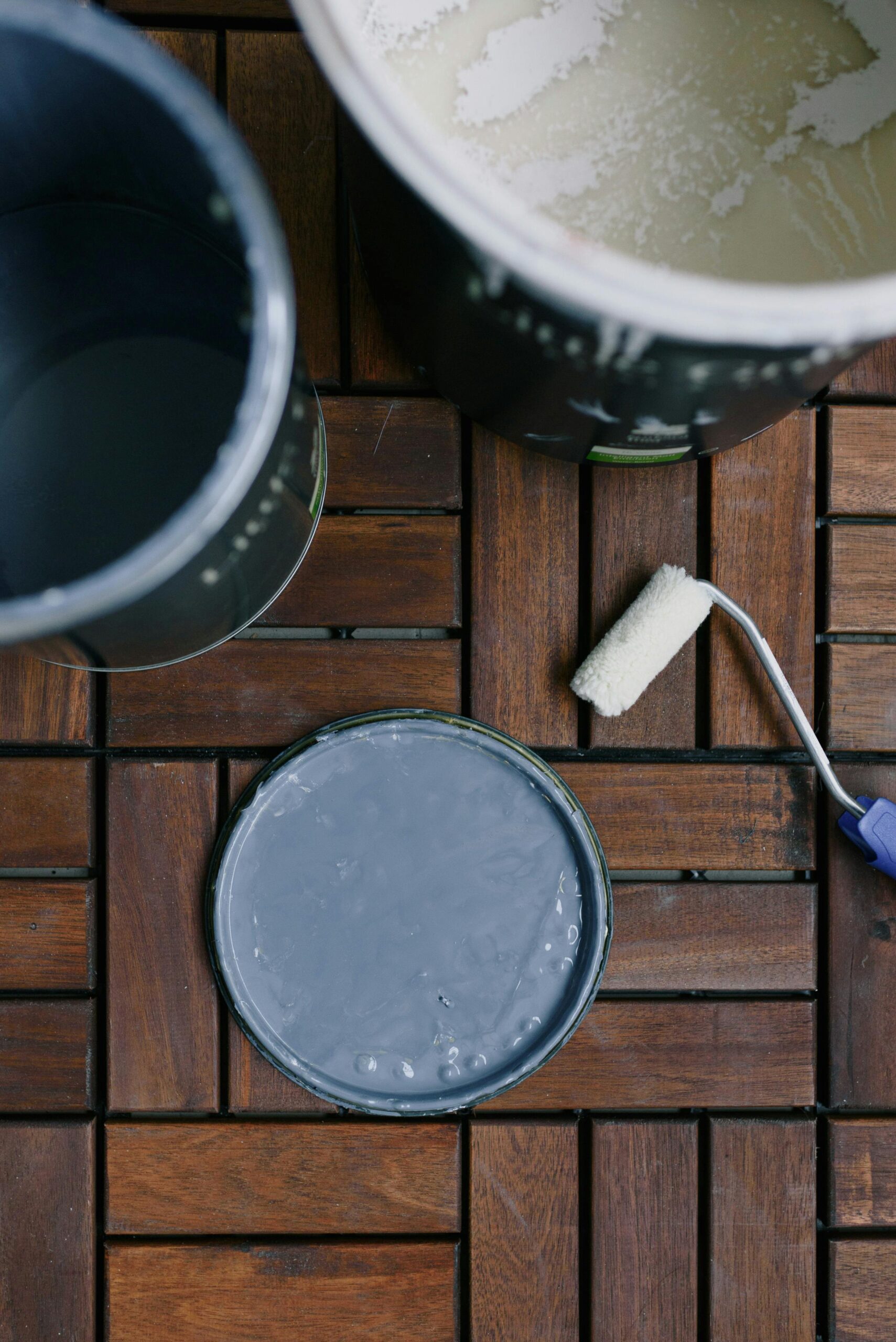Are you thinking about giving your home’s exterior a fresh, vibrant makeover? Painting the outside of your house can give it a whole new vibe that boosts its curb appeal, and adds a layer of protection from the elements. But even though the end result is the same as painting a wall indoors, the process—and its subsequent challenges—can be a night-and-day difference. Before you pick up that paintbrush, here are several important factors to consider.

Choosing the Right Paint Color
The first and most important step in your exterior painting project is selecting the perfect paint color. The color you choose will significantly impact your home’s overall appearance. Factor the architectural style of your home and its surroundings—you’ll want a color that complements both.
It’s also worth noting the existing color palette of your neighborhood, and if there are any HOA regulations around the colors you can paint. The last thing you want is a hefty fee and a painting do-over. But, if you don’t have an HOA and want your home to stand out, have at it! Just make sure it’s a color that you won’t change your mind about in a year or two. Earthy tones like beige, taupe, or soft gray are timeless choices that blend well with various architectural styles.
Prepping the Surface
This involves cleaning, sanding, and possibly repairing any damaged areas of your home’s outside. A smooth and clean surface will make sure that the paint adheres properly and lasts longer.
Begin by cleaning the exterior surface thoroughly. Use a pressure washer to remove dirt, grime, and loose paint. Allow it to dry completely before moving on to the next step.
Inspect the surface for any cracks or holes. Fill them with an appropriate filler and sand the surface to create a uniform texture. Sanding also helps in removing any peeling or flaking paint, ensuring a smooth finish.
Get Quality Paint
I cannot stress this enough—investing in high-quality paint is a wise decision. While it may be tempting to go for cheaper options, premium paints provide better coverage and durability. They also resist fading and weathering, so your home looks like new for the foreseeable future. Plus, quality paint gives a better finish and also requires fewer coats, saving you time and money in the long run. Look for paints specifically formulated for exterior use, as they offer better protection against the elements.

Don’t Forget the Primer
Primer is often an overlooked step, but it’s essential for a long-lasting finish. This creates a stable base for the paint to bond with and prevents issues like peeling or blistering in the future. Primer also helps in achieving a consistent color and finish.
Timing Is Everything
Choosing the right time to paint your home’s exterior can be tricky. If you live in an area with a rainy season, you might want to wait until it passes. Extreme summer heat isn’t ideal either, as we don’t love melting in the hot sun. Mild temperatures are the way to go for painting, as they allow the paint to dry and cure properly.
Late spring and early fall are typically the best times for exterior painting. You’re less likely to encounter unexpected rain or humidity that can affect the paint’s drying process.
DIY vs. Hiring Professionals
Decide whether you want to tackle this project yourself or hire professionals. While a DIY approach can save money, professional painters bring expertise and efficiency to the table. They can give you a flawless finish and save you time and effort.
If you have experience with painting and the necessary equipment, a DIY approach can be rewarding. However, if you’re unsure about your skills or the project’s scale, it’s advisable to hire professionals. They also have the knowledge to handle various surfaces and can provide valuable insights on color choices and paint types.

Consider the Landscape
Will you be making changes to your garden or other outdoor features? It’s best to plan these changes before you start painting to avoid any accidental damage to your freshly painted surfaces.
Protect your plants, bushes, and outdoor fixtures by covering them with drop cloths or plastic sheets. Trim any overhanging branches that could brush against the wet paint.
Don’t Rush the Process
Rushing through the project can lead to uneven coats, drips, and a less-than-perfect result. Take your time, and you’ll be rewarded with a beautifully painted home.
Start with a systematic approach, such as painting one side of the house at a time. Use even strokes and make sure each coat is fully dry before applying the next.
Clean-Up and Maintenance
Once your painting project is complete, don’t forget about maintenance. Regularly inspect your home’s exterior for any signs of wear and tear. Touch up any areas as needed to keep your home looking its best. Regular cleaning can also extend the life of your exterior paint. Use a gentle detergent and a soft brush or sponge to remove dirt and grime. Avoid high-pressure washers, as they can damage the paint.
popular posts
- 1It’s Black Business Month, So Let’s Go Shopping and #BuyBlack!
- 2These Home Decor Items Will Instantly Make Your Space Look Outdated
- 3Black-Owned Home Decor Stores To Support Across the United States
- 4A Look Inside Elon Musk's Tiny $50,000 House
- 57 Black and Multicultural Designers To Follow For Design Inspo
Home

These 5 Kitchen Tools Will Up Your Culinary Experience
by Arielle Clay | January 19, 2023

I’ll Drink To That! Host a Black-Owned Wine & Spirit Tasting At Home
by Arielle Clay | January 20, 2023
Spaces
Whether it’s luxury or ease, every area of your home should be as fabulous and unique as you.

DIY Throw Pillows: These 5 Fabrics Add Both Texture & Culture
by homeandtexture | February 22, 2023
FOLLOW ALONG ON INSTAGRAM
#homeandtexture
Find us on social for more home inspiration where culture, personal style, and sophisticated shopping intersect to help you create a home where you love to live.





